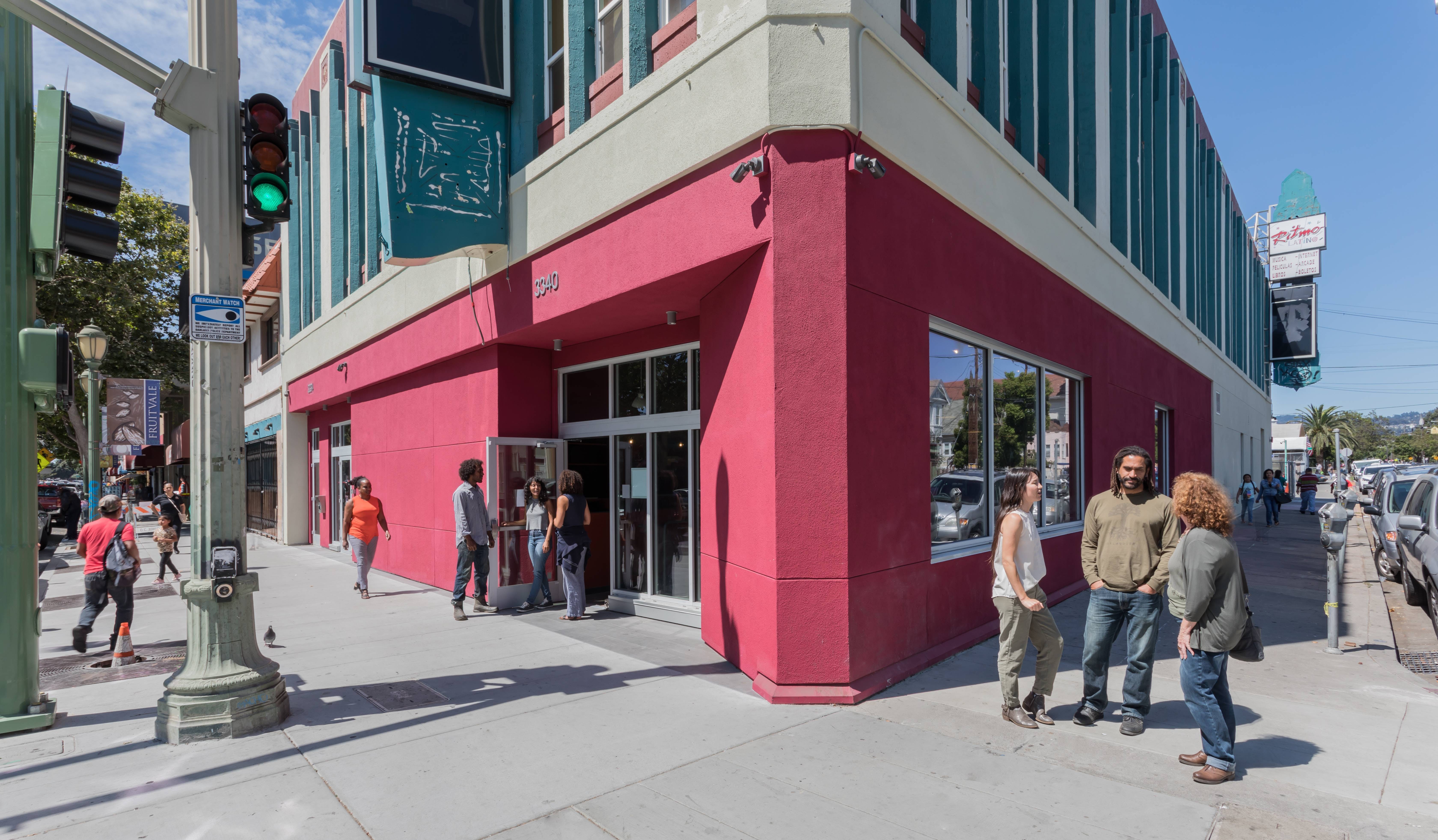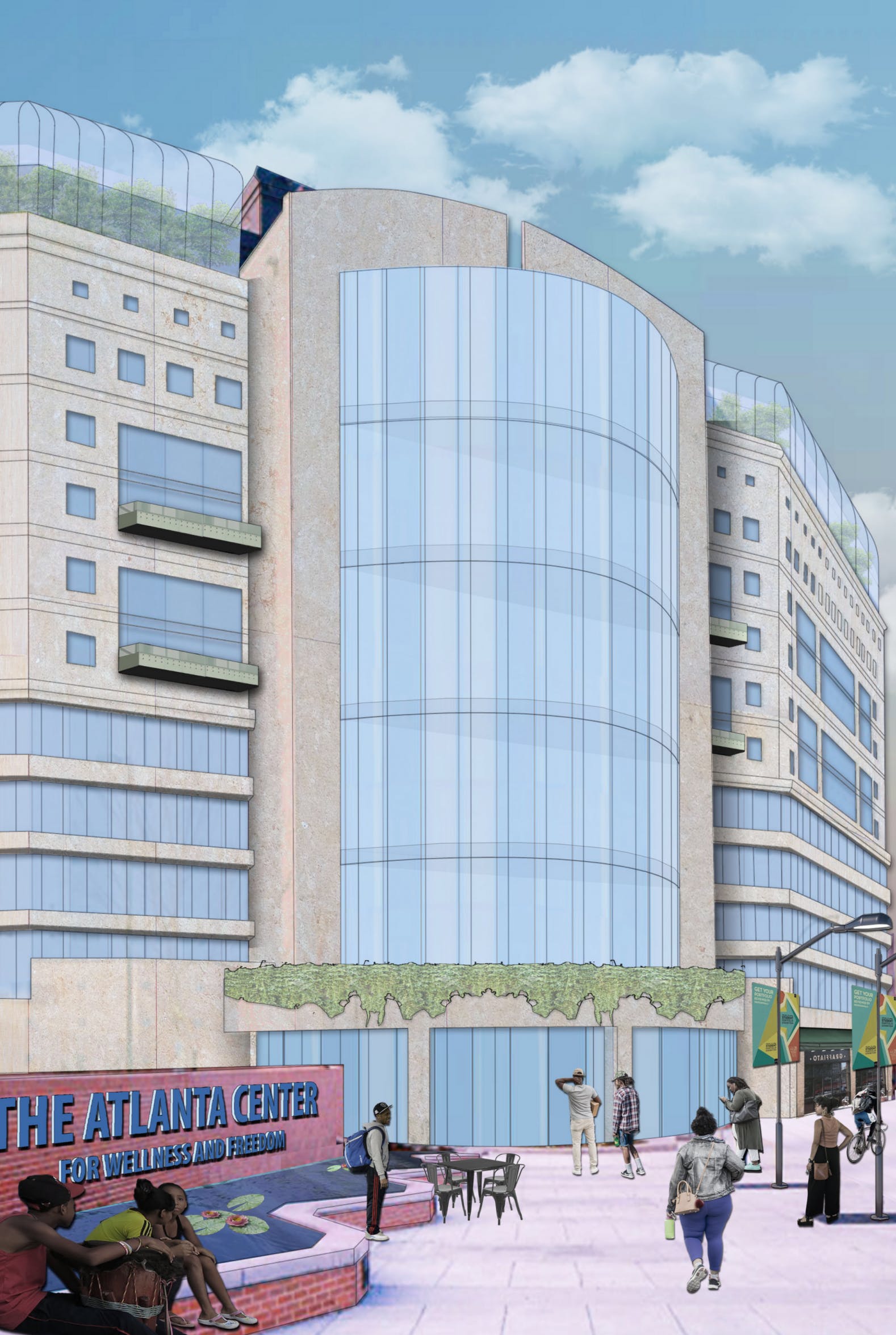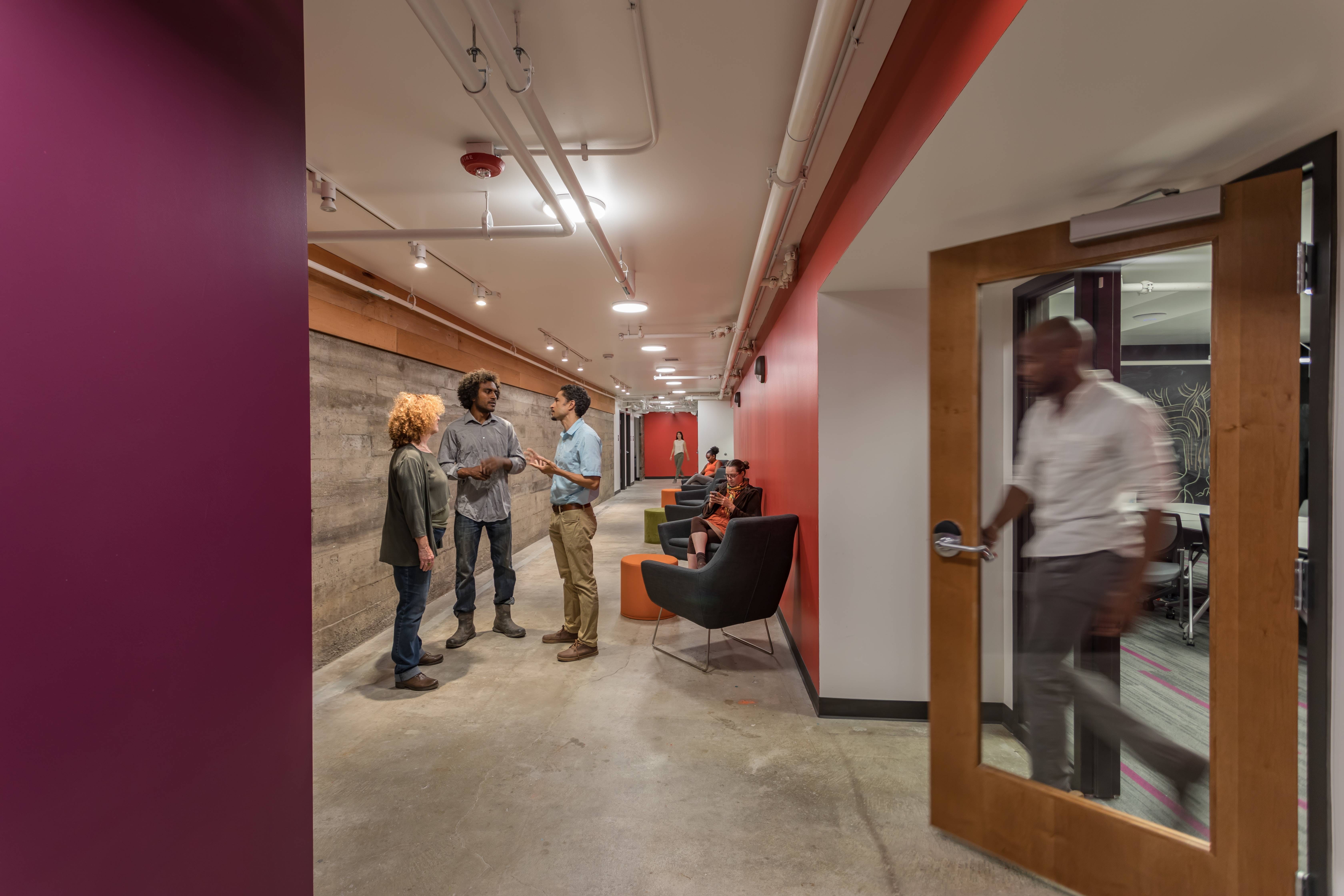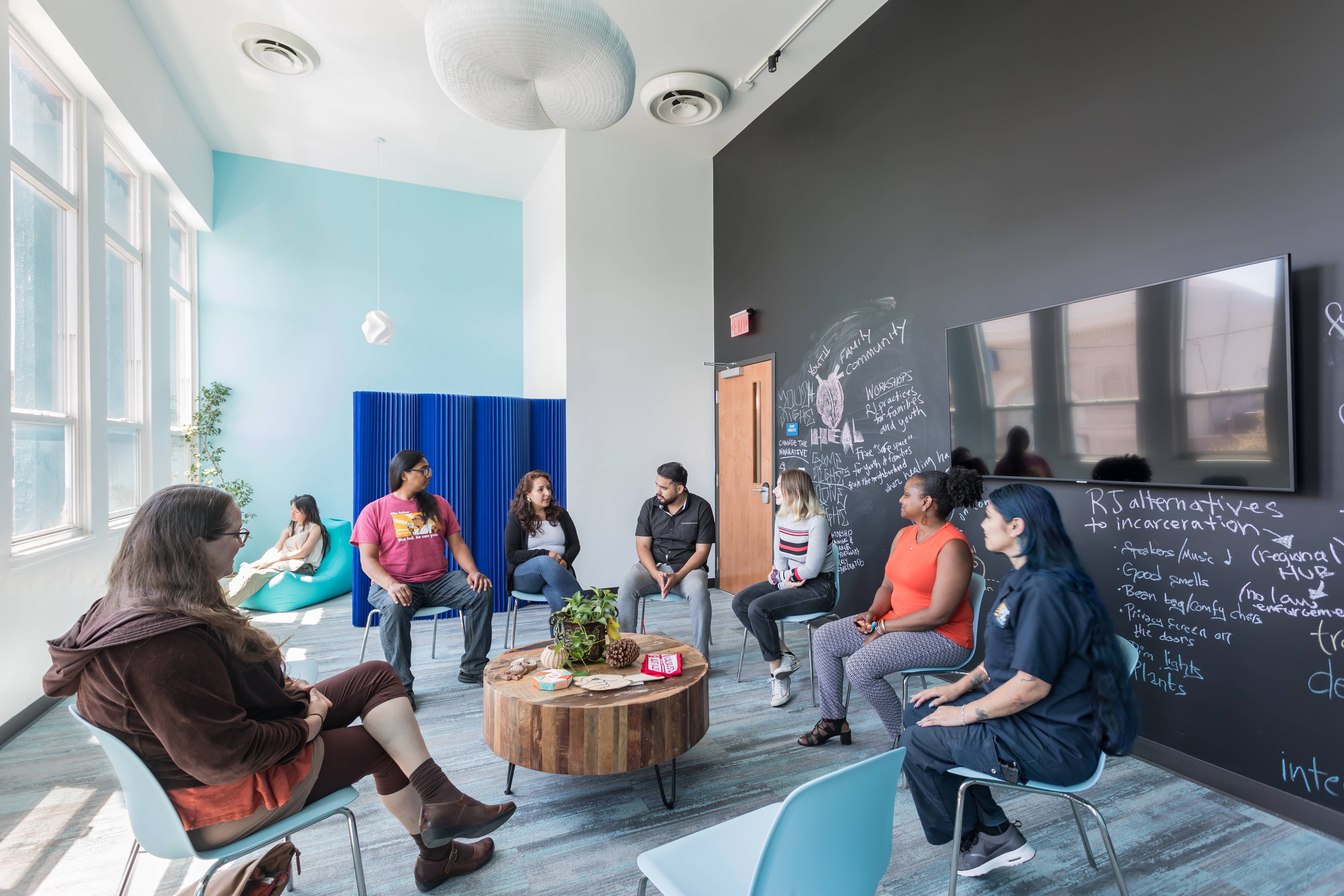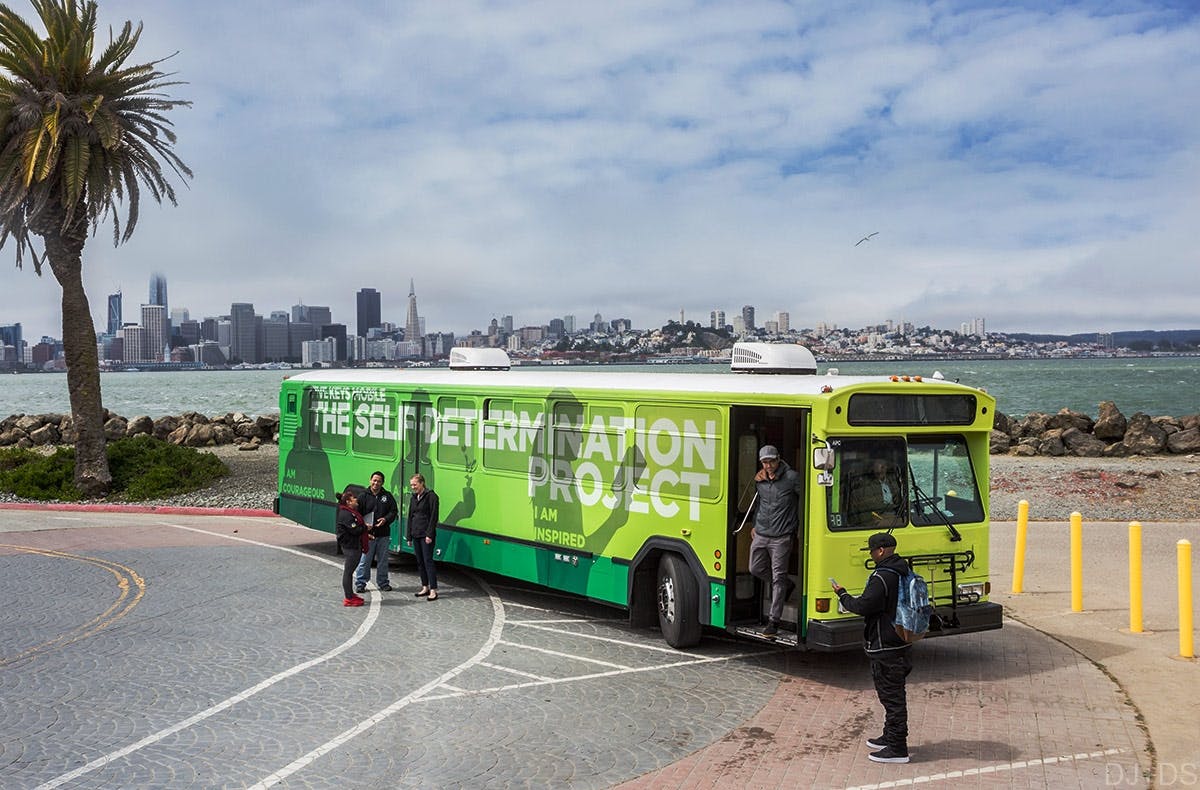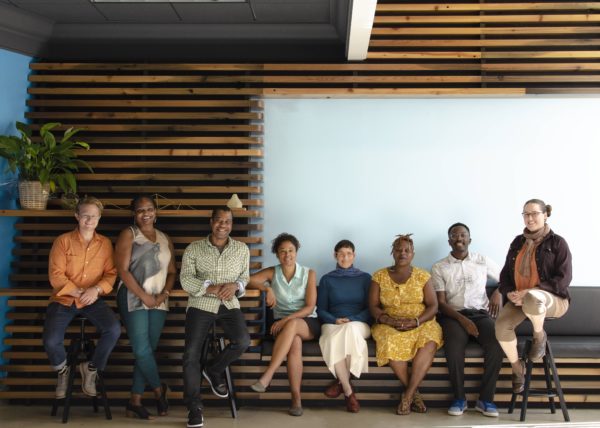

The Designing Justice + Designing Spaces team with co-founders Kyle Rawlins and Deanna Van Buren third and fourth from the left. Photo by Oretola Thomas.
Where and when did your practice start?
We started the firm in 2013 and we are based in Oakland, California.
How did you come up with your name and company ethos?
The name came from a toolkit we created for facilitating and leading design workshops in high-security settings with incarcerated men and women around the intersection of restorative justice and design.
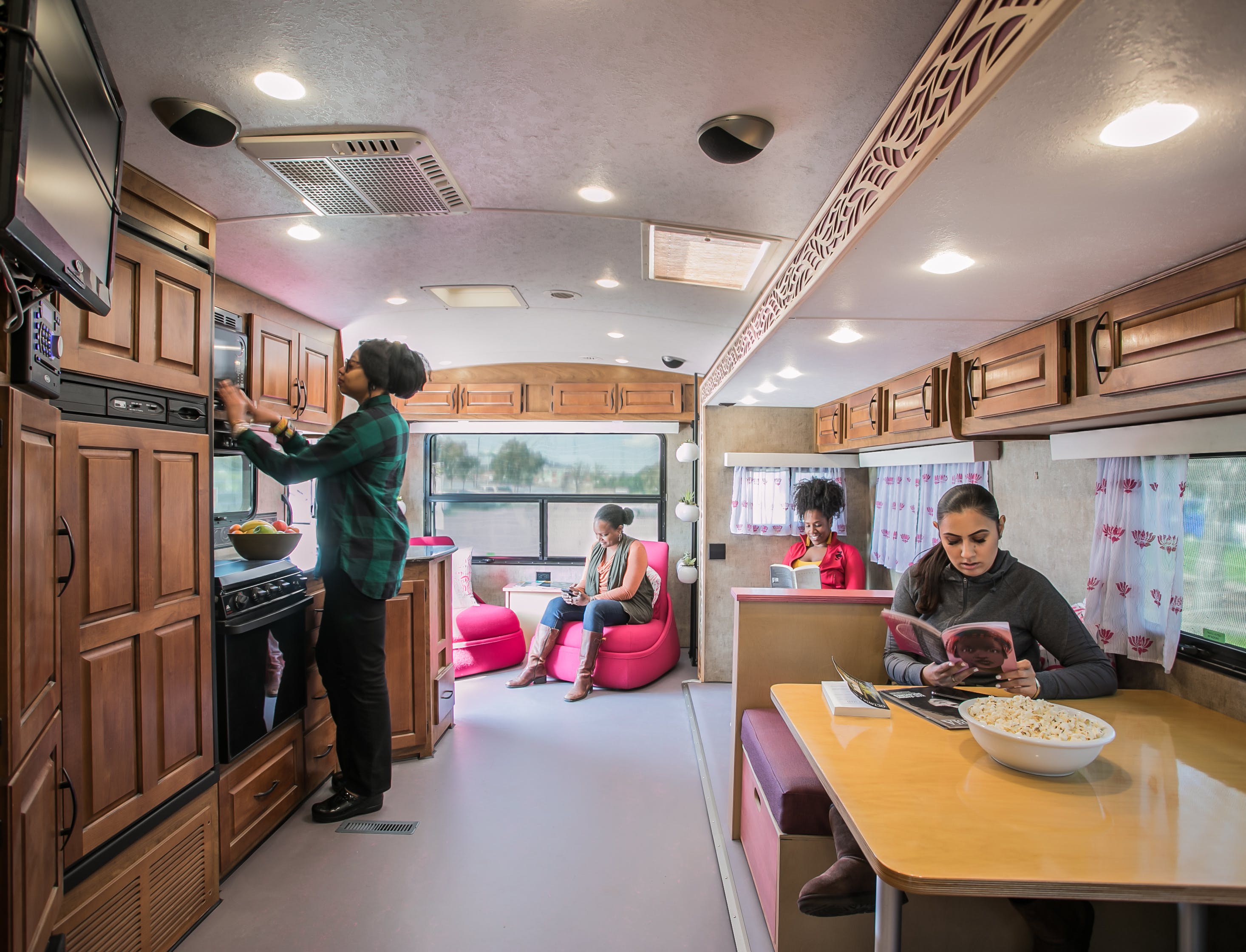
How many people work at your company?
There are eight of us full-time.
Why did you decide to start an office?
DJDS co-founder Kyle Rawlins and I each had our own offices and were entrepreneurs. We started a new practice together because we felt that traditional architecture and real estate development firms were not practicing in alignment with our values, were not engaging communities in the work, and were not practicing with social impact in mind. They were also extremely white male-dominated and not resonant with the work culture we were interested in being a part of.
What are other offices that you look at for guidance and why?
We love KDI, Greater Good Studio, Love and Magic Company and Colloqate as examples of firms charting a unique path in design—and sometimes real estate—to solve big social issues. They think differently and challenge the status quo. We sometimes think of ourselves as the IDEO.org of reimagining justice.
What would you want your firm to be known for?
The creation of the first dedicated Center for Restorative Justice in the nation (maybe even the world). We have designed smaller versions of it and a conceptual design, but want to see it become a reality. We also hope to support a city in the United States to become the first Restorative Justice City. That would be incredible.
We started a new practice together because we felt that traditional architecture and real estate development firms were not practicing in alignment with our values, were not engaging communities in the work, and were not practicing with social impact in mind. They were also extremely white male-dominated and not resonant with the work culture we were interested in being a part of.
What was the first 365 days of running your practice like?
Not bad, actually. We got some grants early on. We had space and good people to work with. We weren’t paying ourselves, but were definitely filled with excitement and possibility.
What were the biggest obstacles along the way?
Figuring out how to work in communities that were really traumatized, and the other complexities that come with doing work directly with and for the community. We love it and believe in it, but it’s also complex. That’s why we have a community liaison on staff.
What are you currently working on?
We are working on several adaptive re-uses of prisons and jails, including the Reimagine Atlanta City Detention Center Initiative in Atlanta. The goal is to transform them into something other than prisons and jails. We are also working on re-entry housing and housing for youth transitioning out of foster care who often end up homeless or incarcerated. We have a Pop-up Village project that activates blighted sites; a Women’s Mobile Refuge Trailer, which provides a mobile space of refuge for women during the night as they transition from prison and other disparaging environments; and the Mobile Refuge Room to create dignity and privacy in transitional housing.
We explore creative financing strategies for designing and developing spaces and places that restore and transform communities, as well as creative tools for community engagement.
What other avenues of creative exploration does your office pursue?
We explore creative financing strategies for designing and developing spaces and places that restore and transform communities, as well as creative tools for community engagement. We also have several digital products in development from a video game to a mapping and data collection tool.
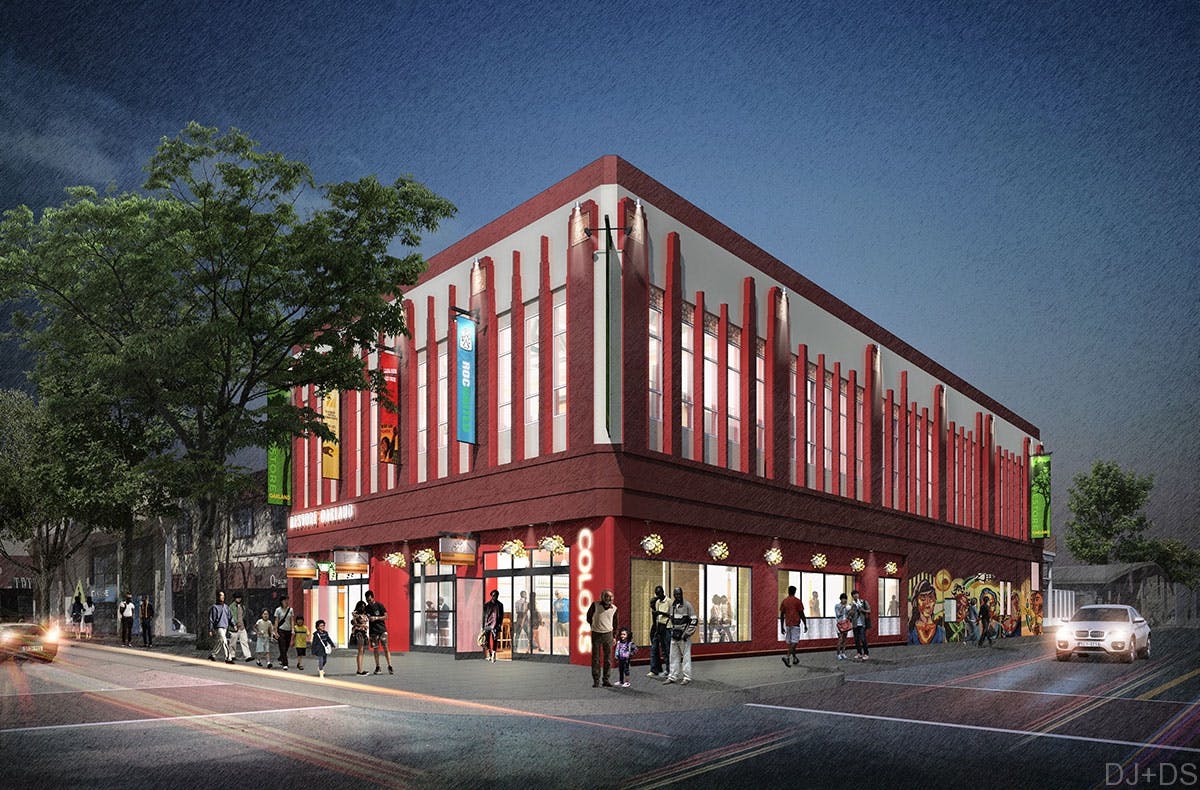
What are the benefits of having your own practice? And staying small?
With your own practice, you can do things your way, create your own culture, and curate a community of creatives that works well together. Staying small is helpful for staying fluid and testing out new processes and ideas. We really know each other and care about the whole person. It gives us time to really be with one another and form a tight, close-knit team.
What is the main thesis of your office and has it changed over time?
Our office is rooted in creative strategies that are empathic and always include deep listening to those most impacted by the problems we are seeking to solve. We are in service to those who have had no voice in the built environment. We are a relatively new practice so the thesis hasn’t changed much, but has certainly become more refined.
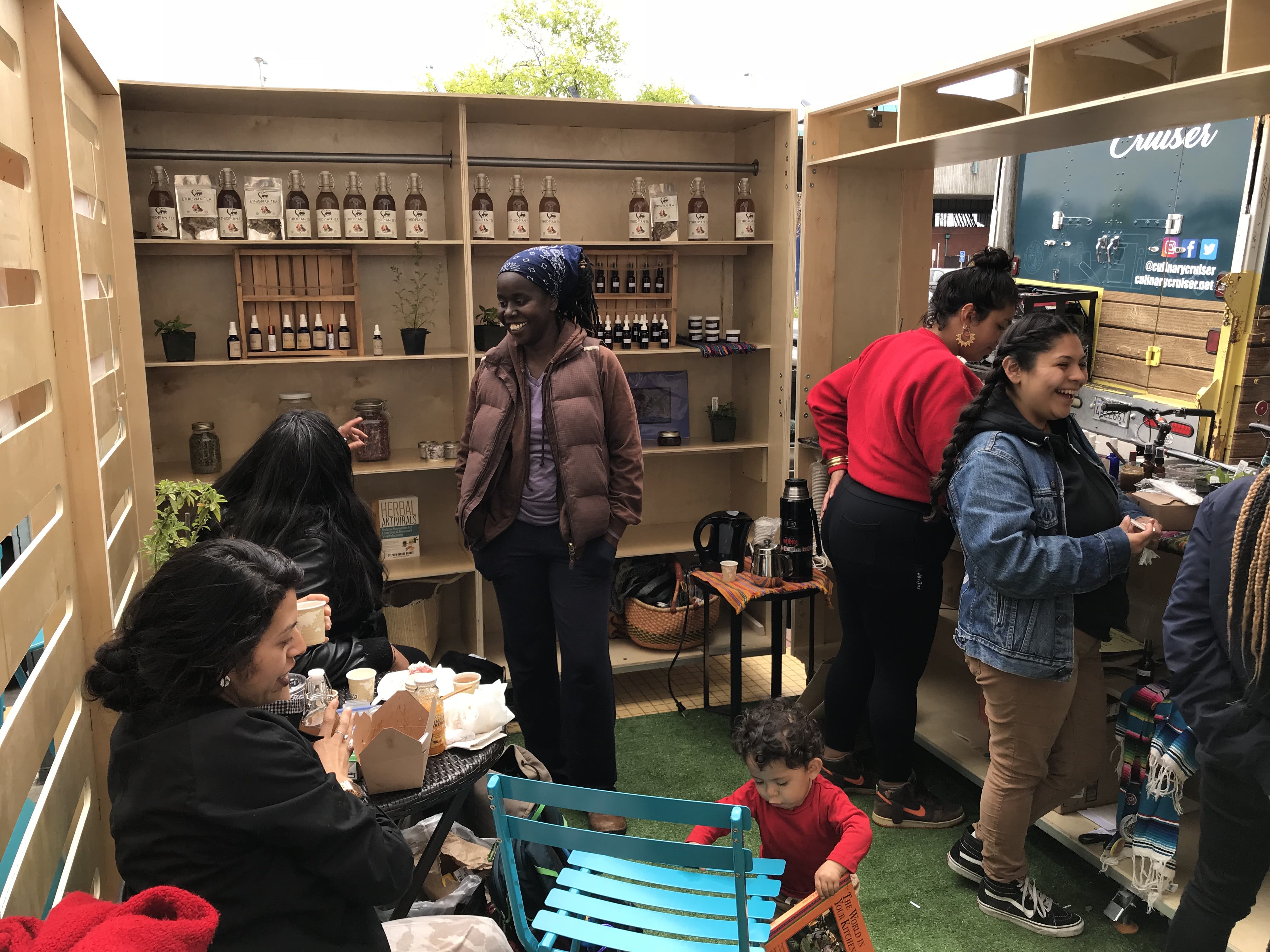
Where do you see the office in 5 years? In 10 Years?
In five years, we will own and have built at least four or five of our prototypes, if not more. Our goal is to own or co-own our projects so that we have assets that provide us with the income to build more stuff. In 10 years, we will have built and evaluated these prototypes and be able to show how to finance them while also exposing the cost-benefit of building these types of places as opposed to prisons and jails. Our processes and products will be in replication and will have changed the landscape and our vision of justice.
How do you look for talent for your office?
We just talk to people who reach out to us. We invite them to try us out and see if we are a good fit. Our office insists on emotional intelligence and that you be culturally competent to work in low-income communities of color. This means having done your racial bias and gender equity work, as well as being a creative and hard-working person. It’s not easy to find a good fit for our practice, but we have an amazing team today.
As you know, in many cases, prisons are spaces of institutionalized brutality; What power do architects have to better the living conditions of people who are incarcerated right now?
We don’t design prisons and jails, but there are already plenty of architects doing this work. Even architects like Frank Gehry and MASS Design Group are putting efforts in to this aspect of the system. Our view is that more architects should instead help those who are formerly incarcerated so they don’t go back to prison, and to support populations who are targeted and at high-risk for incarceration. We also want to support the masses of children and families impacted by incarceration who are living with missing loved ones in communities with no resources. There are a lot more of them than there are people in prison or jail.
Our view is that more architects should […] support populations who are targeted and at high-risk for incarceration. We also want to support the masses of children and families impacted by incarceration who are living with missing loved ones in communities with no resources. There are a lot more of them than there are people in prison or jail.
You’ve said that in terms of spatial justice, “space amplifies effects of the process,” can you explain how your practice works to push against (or in positive cases, embrace) that idea?
We are only interested in building spaces that amplify values we believe in. We do not believe punishment and retribution is the best way of addressing harm, so we don’t design for that. We do not believe that there are members of our society who deserve less than others, so our spaces are of the highest quality, even with a low-budget. We build beautiful spaces that amplify self-care, love, restoration, and respect. We take this seriously.
You designed Restore Oakland, the nation’s first center that has space dedicated for restorative justice. Can you tell us a bit about what that means for the design of the building?
Restorative justice offers an alternative to punishment and possible imprisonment by bringing together the victim and the perpetrator to resolve the harm caused. For the process to work, it must take place outside of traditional courthouses and government buildings, which are designed to be oppressive, punitive, and windowless.
At Restore Oakland, the Restorative Justice Rooms are painted in a peaceful and calming sky blue, there are multiple large windows, and chairs are arranged in a circle in the tradition of peace circles used by many Native American cultures.
At Restore Oakland, the Restorative Justice Rooms are painted in a peaceful and calming sky blue, there are multiple large windows, and chairs are arranged in a circle in the tradition of peace circles used by many Native American cultures.
Two nonprofits, Restorative Justice for Oakland Youth (RJOY) and Community Works West, which have office space at Restore Oakland, are partnering with the Alameda County District Attorney’s office to divert cases involving people aged 15 to 24 into the restorative justice program.
How does operating as a non-profit impact the way you practice architecture?
It allows us to pursue our own ideas rather than what a client always wants. It also allows us to use processes that other architects would never be able to use because of the cost and time associated with deeply engaging communities. We love the freedom it gives us to lead, but it can also be challenging to work with philanthropy that changes a lot and [donors] who often don’t understand what we are doing. It’s also challenging to work within a system that requires us to fundraise instead of doing the work we love.
